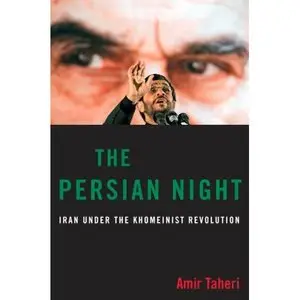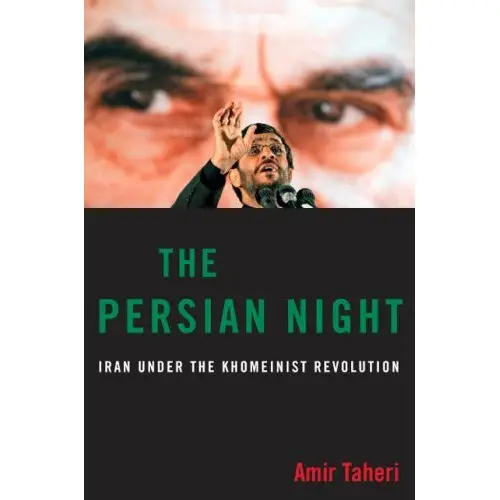Amir Taheri: The Persian Night: Iran under the Khomeinist Revolution
Encounter Books | ISSN 1594032408 | 2009 March 25 | Pages: 413 | scanned PDF | 71 MB
This timely and fast-paced book by celebrated Iranian-born journalist Amir Taheri examines the history of the Khomeinist movement in Iran to show how it is genetically programmed for war. It will also show how Khomeinsim can be defeated, enabling Iran to close the chapter of the revolution and return to the global mainstream. This book is mandatory for anyone concerned about the future of Iran, terrorism, and the prospects for middle east peace.
Pure dynamite; the best book of the year!
This is an outstanding introduction to the recent history of Iran and the fascist tyranny that has ruled this ancient people for 30 years. Among other things, Taheri explains the real difference between Shiism and Sunni Islam. They are quite major differences and I can see why the split has never been resolved. It is at least as big a difference as that between the Catholic Church and the various Protestant churches. For example, in Shiism the role of mullahs and the ayatollahs has been expanded and that of the Quran and even Mohammed are diminished. An analogy might be the role of saints in the Catholic Church vs the spare emphasis on Bible study among Protestant sects. The Sunnis would play the role of the Protestants.
He also makes clear that the rule of Khomeini had little to do with the precepts of the Shiite faith as he seemed more interested in power and dictatorial rule. As the years have gone by, the Iranian people have become privately much more secular as they are forced to appear devout on public. Since the American overthrow of Saddam in 2003, those who remain devout have turned to Ayatollah Sistani for spiritual guidance and the Iranian city of Qom has declined in importance as a religious center. This, of course, is contrary to the vigorous efforts of the regime to build centers of worship. President Ahmadinejad has recently complained that no new mosques have been built in Tehran. Actual attendance at services has declined as the mullahs have been discredited by their corruption.
Another recent trend has been the rise of illegal trade unions, culminating in the 2004 bus drivers strike and the appearance of "Iran's Lech Walesa," Mansour Osanloo. Taheri describes similar organizing by teachers and women's groups. Many union leaders have been arrested or killed.
Taheri points out that the regime in Iran bases its entire foreign policy on anti-Americanism and there is no possibility of a "grand bargain" with America. In the waning days of Bill Clinton's presidency, he became convinced that a breakthrough was possible, beginning with a "casual handshake" with the Iranian president at the UN. Clinton stationed himself in the corridor where the supposed handshake was to occur but the Iranian never showed up. They had decided humiliating Clinton was more valuable to their cause. The invasion of Iraq and the overthrow of Saddam gave them pause and, for two years, they suspended uranium processing and their nuclear project. Once Bush appeared to weaken in any intent to overthrow the regime, they resumed processing and in 2005 the election of Ahmadinejad signaled full speed ahead.
The events of 2009, following the fraudulent election of Ahmadinejad, suggest that Taheri is correct about what is going on in Iran. This book gives a nice history of modern Iran, from the constitution of 1908, which established a secular government and which is suspended while the Khomeini regime is in power, to the recent changes since the book was published. Even the election of 2005 was suspicious since Ahmadinejad was supported by only 12% of voters in polls. Election turnout has declined as people gave up on any ability to modify the dictatorial regime. Ahmadinejad ran as a reformer and against many of the corrupt clerics who have enriched their families while discrediting the religion they represent. He did have genuine support on that issue but not enough to win the election without the heavy hand of the regime. The 2009 election was even more obviously a fraud and the uprising followed.
Taheri was a newspaper editor in Iran before the overthrow of the Shah and obviously no friend of the present regime. Even so, the history he relates has been confirmed by others. The Wikipedia article on his biography lists a number of attacks on him but most of them seem to be written by defenders of the regime. For example, he is accused of not being sufficiently supportive of Khatami's "reform movement." Events since then suggest Taheri was correct. The book is a valuable window into the Iranian regime and I highly recommend it. It is also very readable.



